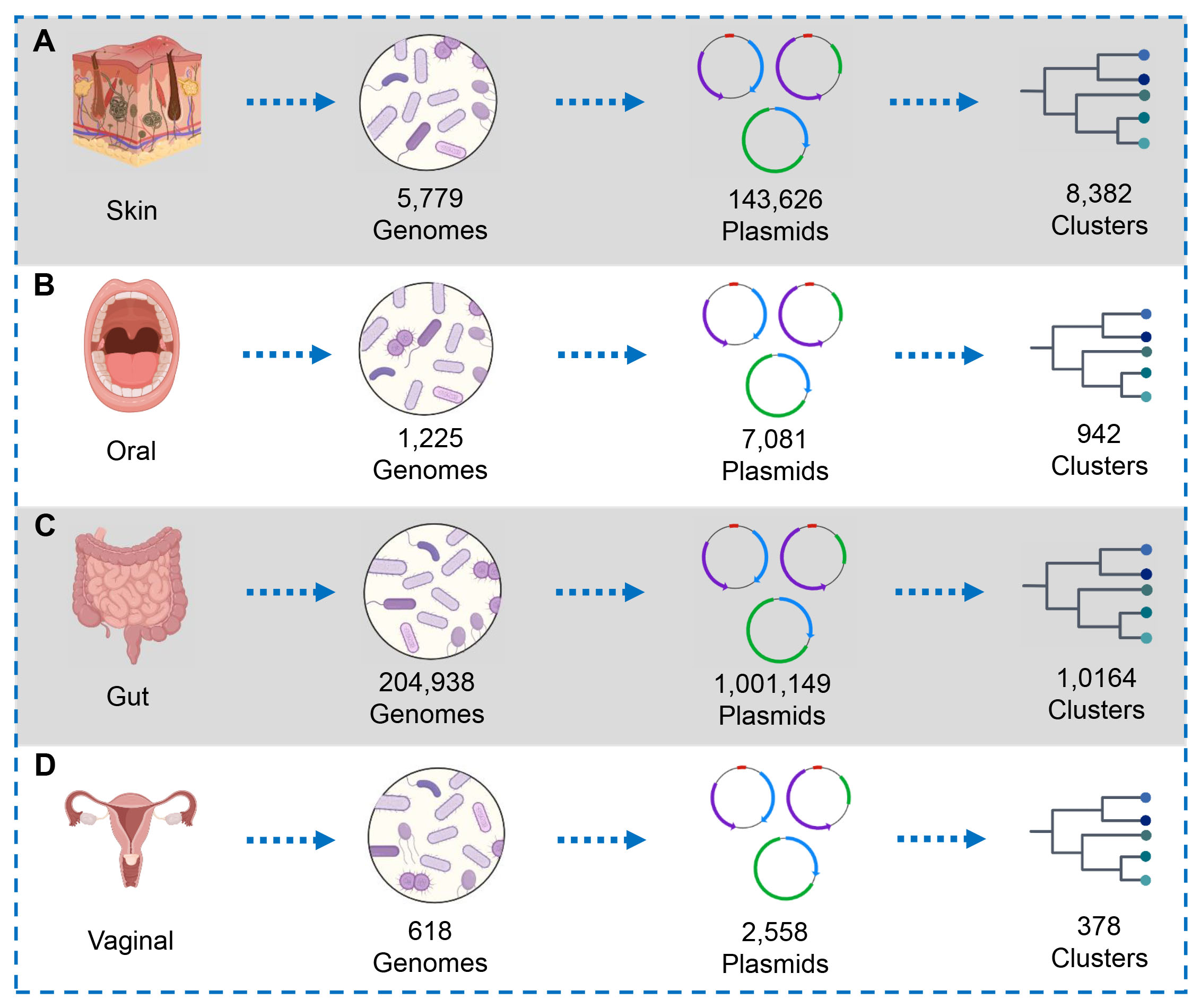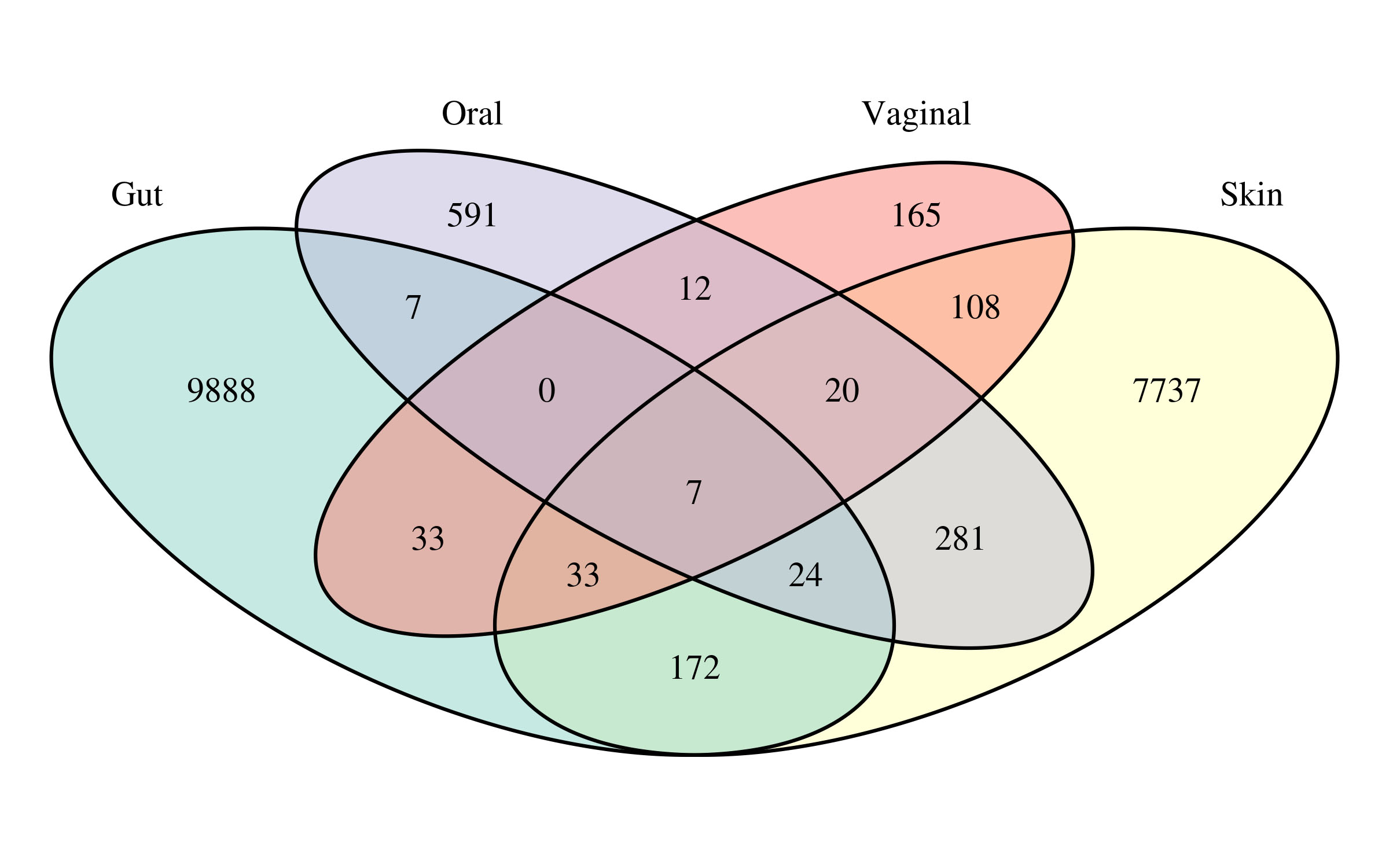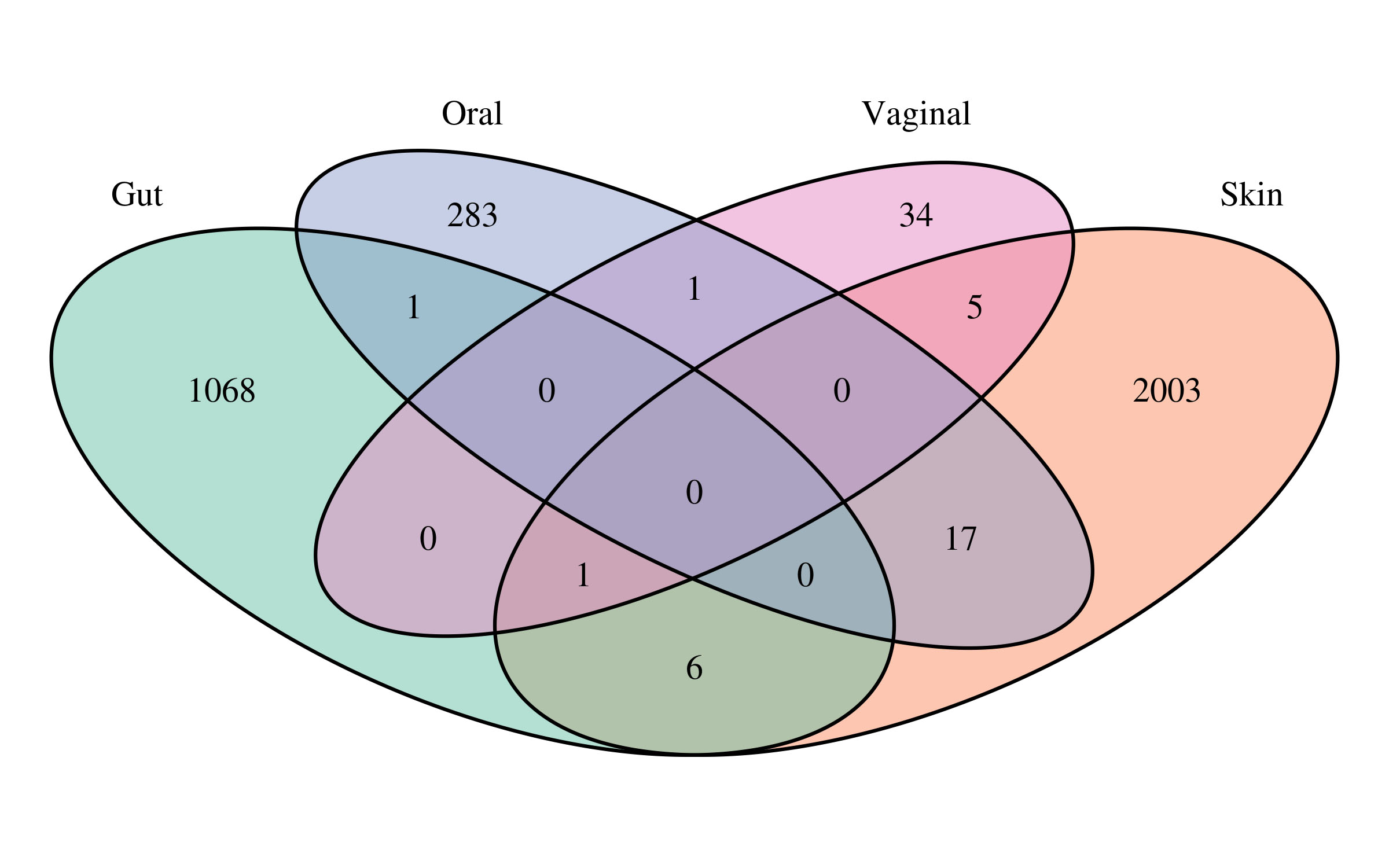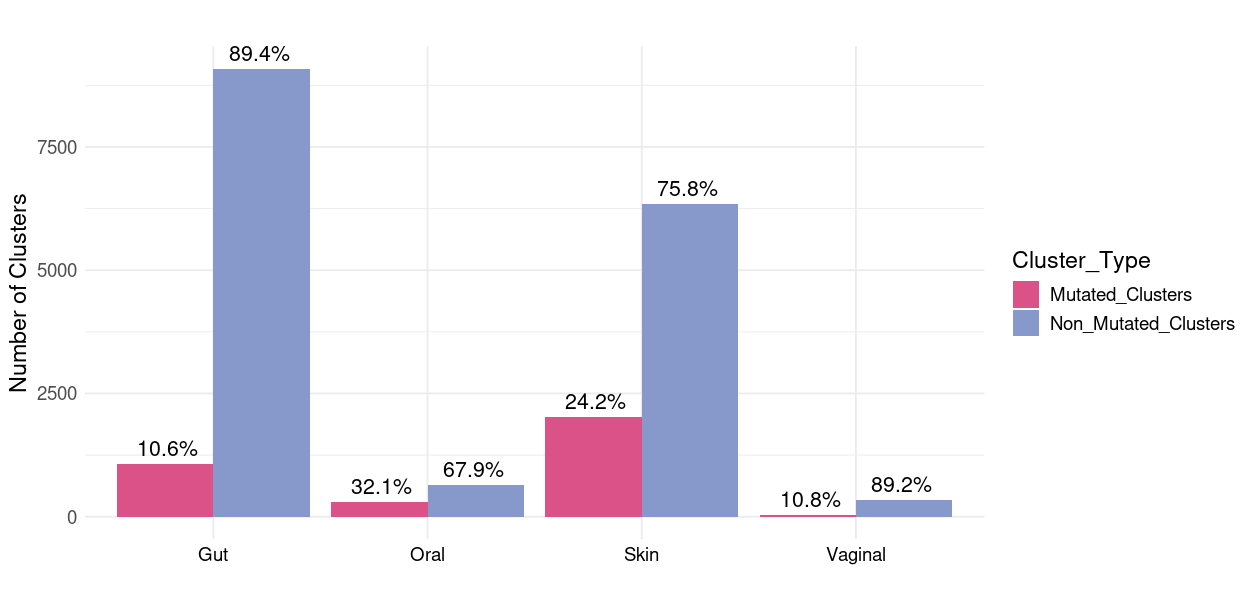Plasmid data summary.
Note: We collected 212,560 publicly available human metagenomes, along with metadata, from four major body sites: skin, oral cavity, gut, and vagina. After removing low-quality assemblies, we employed Genomad, Plasmer, and Platon to extract plasmid sequences, resulting in a final dataset of over 1 million high-confidence plasmid sequences. The resulting plasmid sequences were clustered together with reference sequences from PIPDB and our own de novo assemblies, using an average nucleotide identity (ANI) threshold of > 95%. This process yielded a total of 19,078 plasmid clusters. (A) Skin-derived plasmids. (B) Oral-derived plasmids. (C) Gut-derived plasmids. (D) Vaginal-derived plasmids.
Distribution of taxonomic units across body sites and taxonomic levels.
Note: This bar chart displays the distribution of the number of taxonomic units across four taxonomic levels (Order, Family, Genus, Species) for different body sites (Skin, Oral, Gut, and Vaginal)..
Venn diagram of all plasmid cluster distribution.
Note: The Venn diagram displays the overlap and distribution of all identified plasmid clusters..
Venn diagram of plasmid clusters with detected mutations.
Note: The Venn diagram illustrates the distribution and overlap among plasmid clusters where mutations have been identified.
Bar chart of mutated vs. non-mutated plasmid clusters in skin, oral, vaginal, and gut Samples.
Note: Bar chart showing the proportion of mutated and non-mutated plasmid clusters across different body sites (A) Skin: proportion of mutated vs. non-mutated clusters (B) Oral: proportion of mutated vs. non-mutated clusters. (C) Vaginal: proportion of mutated vs. non-mutated clusters. (D) Gut: proportion of mutated vs. non-mutated clusters.



